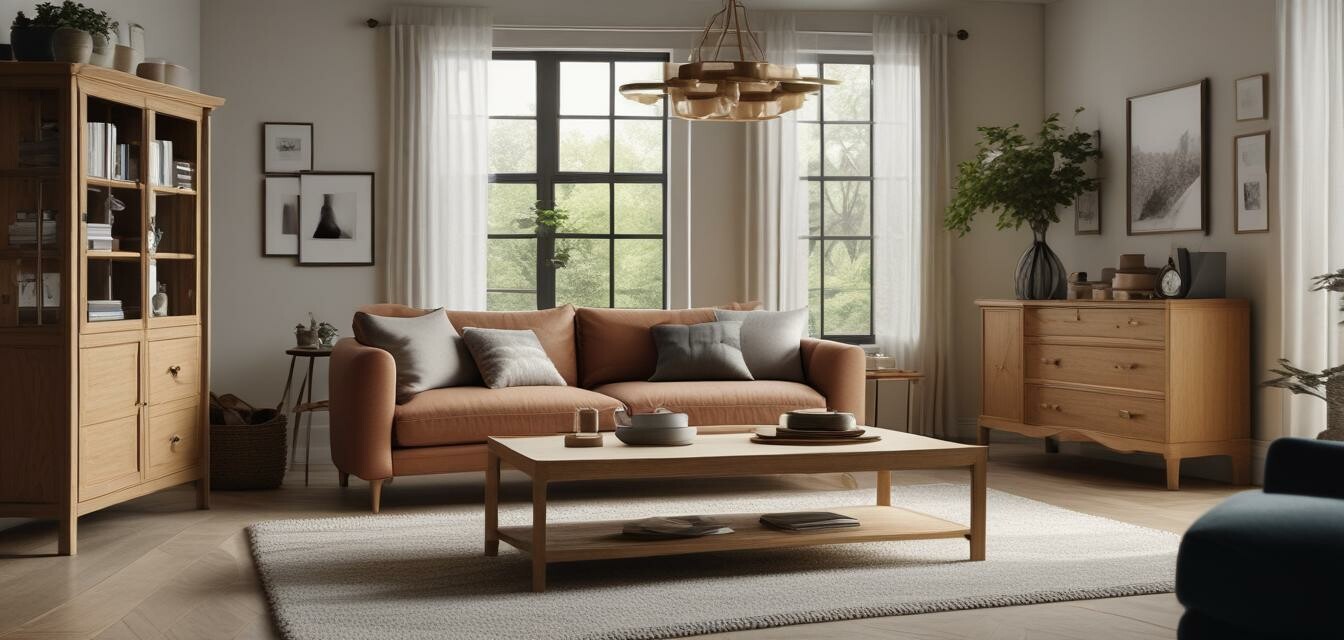
The Future of Solid Oak Furniture in Home Design
Key Takeaways
- The shift towards sustainable materials is driving innovation in solid oak furniture.
- Consumer preferences are evolving, favoring timeless designs and multi-functional pieces.
- Technological advancements are enhancing the craftsmanship of oak furniture.
- The influence of global design trends is reshaping how solid oak is incorporated into interiors.
As we look towards the future, it’s essential to consider how solid oak furniture will continue to influence home design. With growing awareness of sustainability and environmental considerations, along with innovative crafting techniques, solid oak tables and chairs remain at the forefront of interior design trends. In this article, we’ll explore what the future holds for solid oak furniture, focusing on sustainability, innovation, and consumer preferences.
The rise of sustainability in furniture design
Today's consumers are increasingly valuing sustainable furniture options that not only look good but are also environmentally friendly. Solid oak furniture stands out for its durability and how it complements eco-friendly living. Here’s how sustainability impacts solid oak furniture:
| Sustainability Aspect | Impact on Solid Oak Furniture |
|---|---|
| Sourcing | Growing emphasis on sustainably sourced oak, ensuring responsible logging practices. |
| Production Techniques | Innovations in production reduce waste and utilize eco-friendly materials. |
| Longevity | Solid oak is inherently durable, reducing the need for replacement furniture. |
| Market Demand | Consumers actively seeking sustainable options are propelling solid oak's popularity. |
Innovative crafting techniques
With advances in technology, the craftsmanship of solid oak furniture is evolving. Artisans and manufacturers are now able to experiment with new methods and finishes that enhance not only aesthetic appeal but also the durability of products. Some notable innovations include:
- 3D Printing: Allows for complex designs that were previously unattainable with traditional methods.
- Eco-friendly finishes: Use of natural oils and lacquers that provide protection without harmful chemicals.
- Modular designs: Creating pieces that can be adapted and reconfigured to suit changing needs.
Consumer preferences and trends
Today’s consumers are also gravitating towards solid oak furniture because of its timeless designs and functional versatility. Let’s examine some popular trends reshaping consumer preferences:
| Trend | Description |
|---|---|
| Minimalism | Clean lines and simple forms utilizing solid oak help create calming, uncluttered spaces. |
| Rustic Charm | Natural wood grains and organic finishes appeal to the desire for coziness and warmth. |
| Multi-functionality | Pieces that serve more than one purpose are preferred, like dining tables that can also be workstations. |
The influence of global design trends
As design philosophies from around the world continue to blend, solid oak furniture remains a key player. The integration of various aesthetics—including Scandinavian simplicity and Japanese minimalism—is resulting in unique designs that resonate with modern consumers. Some noteworthy influences include:
- Scandinavian Design: Focus on functionality and simplicity.
- Japanese Zen: Emphasis on natural materials and tranquility.
- Industrial Style: Combining solid oak with metal for a robust look.
Looking ahead
The future of solid oak furniture is promising, with sustainability and innovation leading the charge. As manufacturers and consumers alike continue to prioritize eco-friendly practices and unique designs, solid oak furniture will undoubtedly remain a staple in home décor. For those looking to keep up with exciting updates in this realm, regularly check our News and Trends section.
Conclusion
In summary, the evolution of solid oak furniture is positioned on a trajectory where sustainability, innovation, and consumer preferences converge. By staying informed and aware of these trends, homeowners can make educated decisions that enhance their living spaces while contributing to a more sustainable future.
Pros
- Durable and long-lasting furniture choice.
- Environmentally friendly when sourced sustainably.
- Timeless designs enhance modern and rustic aesthetics.
Cons
- Higher initial cost compared to manufactured wood.
- Requires proper maintenance to avoid damage.
Tips for Choosing Solid Oak Furniture
- Look for certification labels indicating sustainable sourcing.
- Choose pieces that harmonize with your existing décor.
- Consider the longevity and versatility of options available.